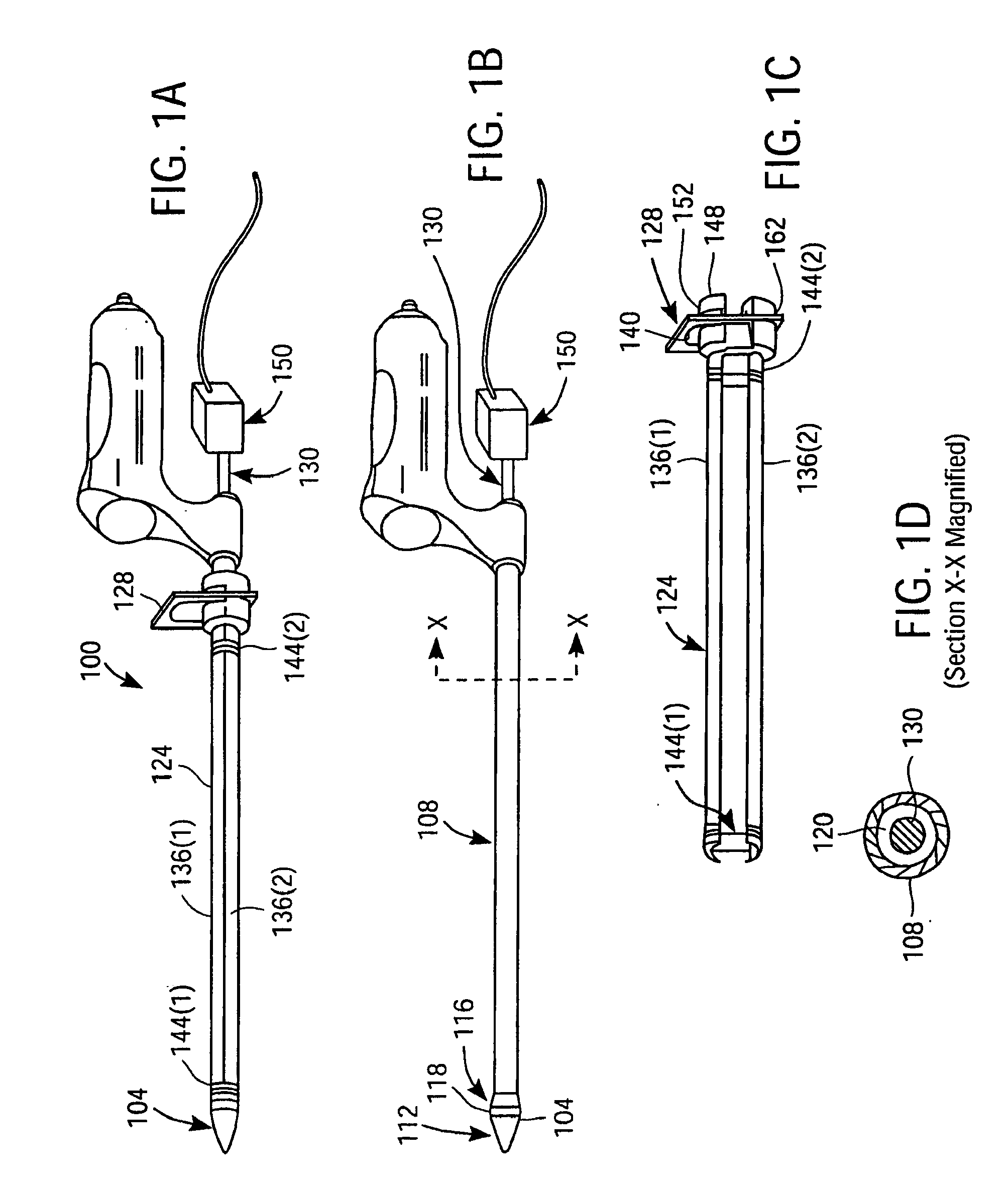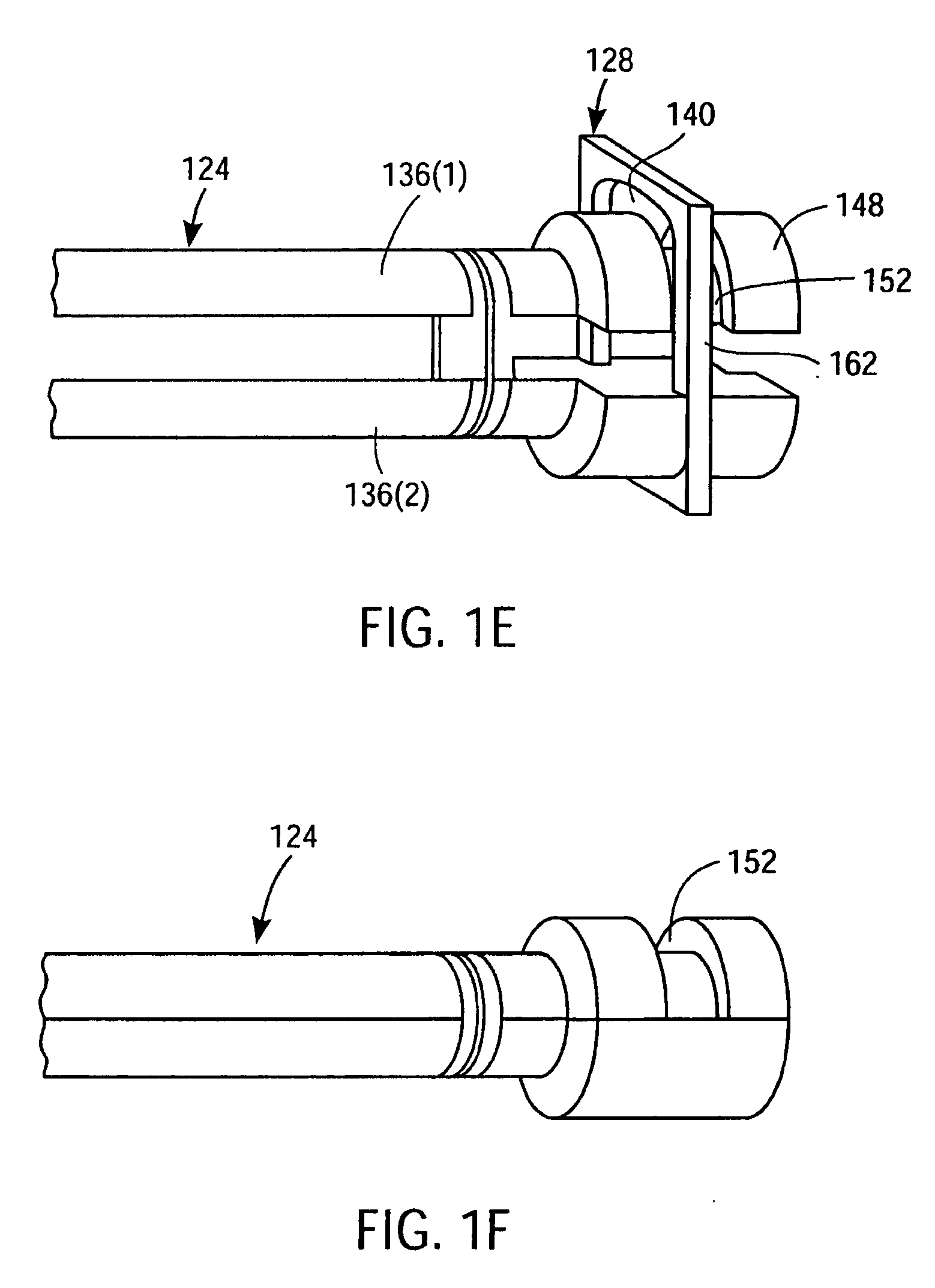Apparatus and Method for Endoscopic Surgical Procedures
a surgical procedure and endoscopic technology, applied in the field of endoscopic subxiphoid surgical procedures, can solve the problems of inability to perform thoracotomy, too invasive, and all procedures are quite invasive, and achieve the effect of facilitating the dissection of the extrapericardial tract using the endoscopic subxiphoid cannula
- Summary
- Abstract
- Description
- Claims
- Application Information
AI Technical Summary
Benefits of technology
Problems solved by technology
Method used
Image
Examples
Embodiment Construction
[0148]FIGS. 1A-D illustrate a preferred embodiment of a dilation tool 100 which embodies an aspect of the invention. Dilation tool 100 includes an inner cannula 108 having lumen 120 as shown in FIG. 1D, and an expandable sheath 124 comprised of shells 136(1) and 136(2) as shown in FIG. 1C. Preferably, the inner cannula is formed of a sufficiently rigid material, such as metal or plastic, that would allow tip 104 to be used to bluntly dissect a cavity from an incision point to the pericardium or other surgical site of interest. Lumen 120 is provided to allow the insertion of an endoscope 130 fitted with video camera 150 in the dilation tool 100, and tip 104 is transparent to allow endoscopic visualization during the surgical procedure. In a preferred embodiment, tip 104 has a long distal taper 112 as shown in FIG. 1B, which allows tip 104 to bluntly dissect away tissue encountered along the cavity to the pericardium. Conically-tapered tip 104 also provides a less distorted field of v...
PUM
| Property | Measurement | Unit |
|---|---|---|
| diameter | aaaaa | aaaaa |
| diameter | aaaaa | aaaaa |
| diameter | aaaaa | aaaaa |
Abstract
Description
Claims
Application Information
 Login to View More
Login to View More - R&D
- Intellectual Property
- Life Sciences
- Materials
- Tech Scout
- Unparalleled Data Quality
- Higher Quality Content
- 60% Fewer Hallucinations
Browse by: Latest US Patents, China's latest patents, Technical Efficacy Thesaurus, Application Domain, Technology Topic, Popular Technical Reports.
© 2025 PatSnap. All rights reserved.Legal|Privacy policy|Modern Slavery Act Transparency Statement|Sitemap|About US| Contact US: help@patsnap.com



